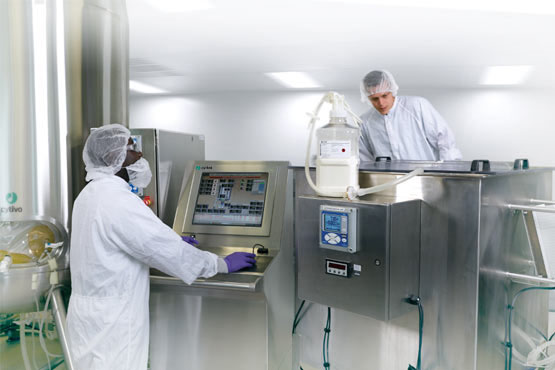Automation and single-use equipment
Alongside the increased speed, efficiency, and economy of single-use bioprocessing technology comes an important challenge – automation, and the data integration it allows. Successful single-use biomanufacturing strategies are designed with data and connectivity in mind.
Our approach to automation
Single-use technologies can be more challenging to automate, but the benefits more than outweigh the costs. That is why we are determined to lead the way in developing efficient, future-proofed automation strategies. To do so, we have analyzed exactly where the benefits of automation lie and how they can be maximized.
In this article, we take a look at some key takeaways from our white paper on improving operational efficiency through automation.
The value of connectivity
Why data is important
Throughout the biomanufacturing process, high-quality data helps you ensure that production is consistent and complies with regulatory requirements. It allows for:
- streamlined batch release
- better instrument control
- coordination throughout a manufacturing plant
- more informed business decisions
Closing automation gaps
Biomanufacturing can be a world of islands. Small-scale automation with no connectivity between processes, lack of coordination, and fragmented data. Disconnects can arise at all levels, including between:
- individual pieces of equipment
- different production scales
- upstream and downstream process development
- separate company departments and facilities
At a bare minimum, your system should allow you to export data from different areas into a single format (such as a spreadsheet). But that still leaves a lot of manual entry and analysis to do. At each stage, there is the opportunity to make the data more accurate, more useful, and easier to integrate. The key to closing these gaps is the appropriate choice of bioprocess equipment.
Choosing the right equipment
The development stage
During product development:
- researchers are usually working at bench scale
- there may be several drug candidates
- there is usually little or no automation infrastructure
- data comes from supplier instruments and controllers built into the equipment
Equipment used at this stage should be modular and flexible. It is vital to select an equipment supplier capable of providing multiple unit operations on modular product platforms which enable data collection/capture.
The manufacturing stage
Things change markedly between the development stage and manufacturing stage:
- there is usually a more developed automation infrastructure
- data might come via a custom-designed system or industry-standard hardware and software
- production methods depend on data imported from the development stages
During manufacturing, the more integrated your system, the more effective your data management will be. Equipment should allow easy scale up from development processes.
Ideal automation solutions are wide-ranging
An ideal automation solution spans the complete upstream-downstream bioprocess train. The data it produces has far wider implications for data management and process control. A comprehensive automation solution can lead to improved efficiency across all functions, such as:
- production
- material management
- quality control
- procurement
- finance
What Cytiva offers
- Modular bioprocess technologies, both hardware and consumables, with easy integration and connectivity
- FlexFactory integrated single-use bioprocess platform
- Technologies designed for efficient scale-up and scale-down
- Technical experts to help with scaling and converting stainless steel processes to single-use
- Automation and integration expertise
-
Download the Full White Paper
Improve operational efficiency in biomanufacturing with comprehensive automation solutions -
Watch the Webinar
Single-use systems in biologics manufacturing and their impact on operational technology
Presented by Gloria Gadea-Lopez, PhD, John Maguire & Mark Maselli of Shire followed by Ken Clapp of Cytiva
